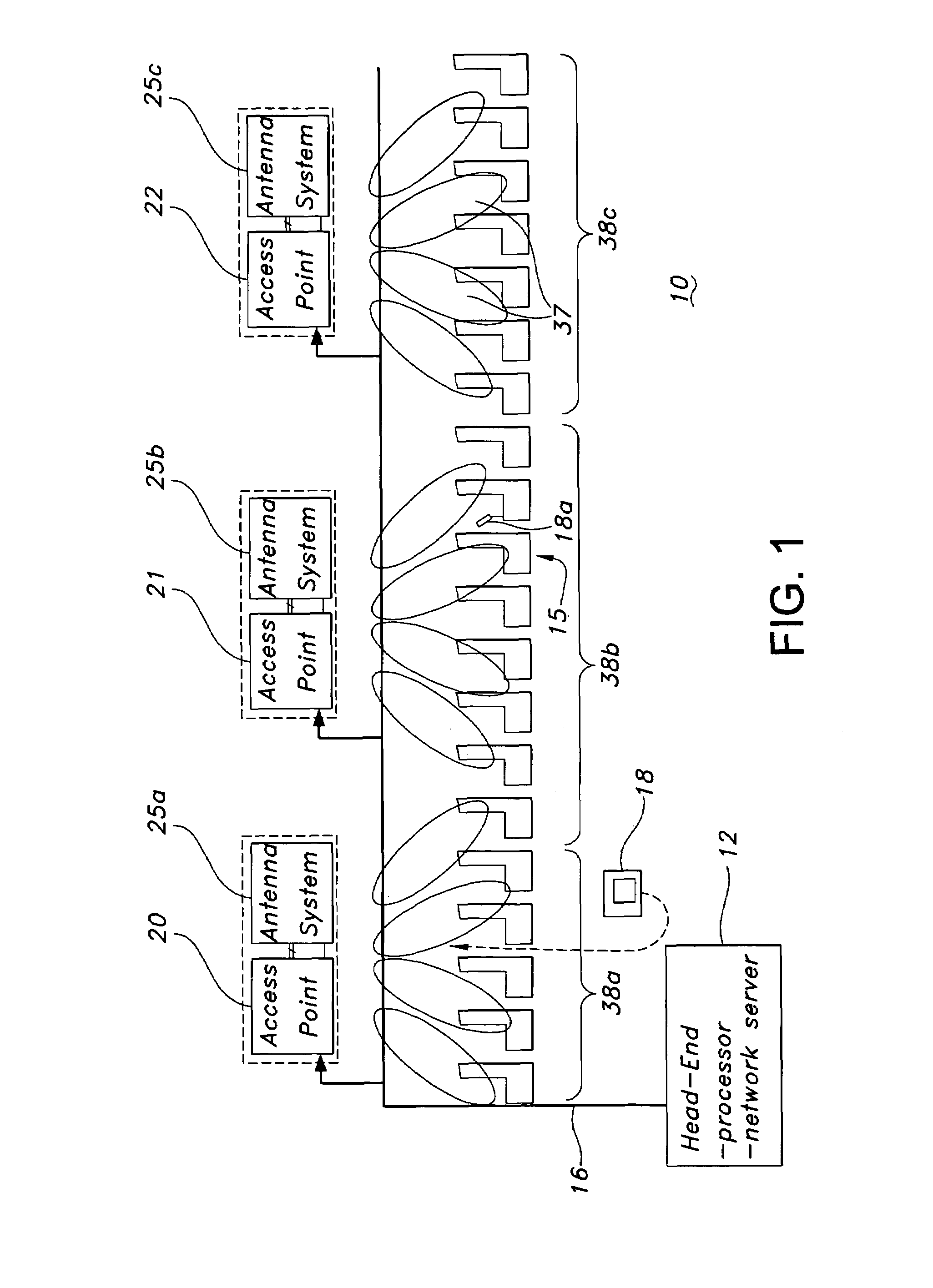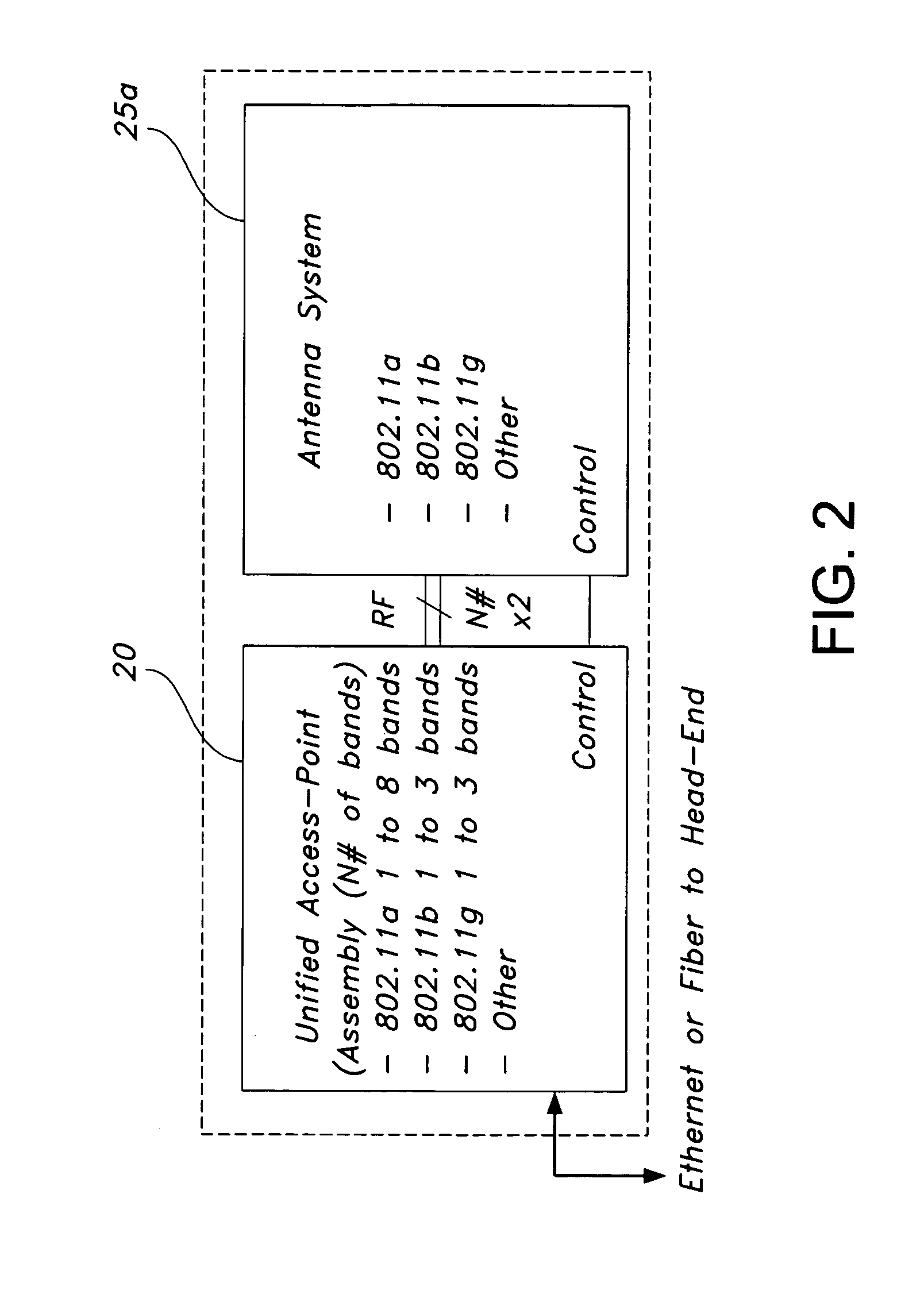Cellular wireless network for passengers cabins
a passenger cabin and wireless network technology, applied in the field of inflight entertainment, can solve the problems of large power consumption, difficult and expensive retrofitting of existing aircraft with new wiring and cables, and large amount of wired systems, and achieve the effect of maximizing connectivity, simplifying procedures, and maximizing connectivity
- Summary
- Abstract
- Description
- Claims
- Application Information
AI Technical Summary
Benefits of technology
Problems solved by technology
Method used
Image
Examples
Embodiment Construction
[0031]The invention described herein is for a cellular wireless in-flight entertainment (IFE) and data distribution system. The invention may use a cellular topology for 802.11 a, b, g WiFi access points in an aircraft cabin. The present invention discloses a tiered scalable service for e-mail, voice over IP, Internet, video, and live TV delivery to wireless personal electronic devices (PED) and to wireless seat displays. The invention further includes a configurable directional antenna system for optimum cabin cell coverage, maximum flight deck protection and repeatable frequency cells supporting scalable wireless network topology. The configurable antenna enables fewer interconnecting cables and wires by directing each radio band to certain cabin areas from a fixed physical location in the aircraft ceiling or wall. An electrical beam-steered antenna is used for each configurable directional antenna in the cabin. RF phases to each active antenna element are selected by a system hea...
PUM
 Login to View More
Login to View More Abstract
Description
Claims
Application Information
 Login to View More
Login to View More - R&D
- Intellectual Property
- Life Sciences
- Materials
- Tech Scout
- Unparalleled Data Quality
- Higher Quality Content
- 60% Fewer Hallucinations
Browse by: Latest US Patents, China's latest patents, Technical Efficacy Thesaurus, Application Domain, Technology Topic, Popular Technical Reports.
© 2025 PatSnap. All rights reserved.Legal|Privacy policy|Modern Slavery Act Transparency Statement|Sitemap|About US| Contact US: help@patsnap.com



